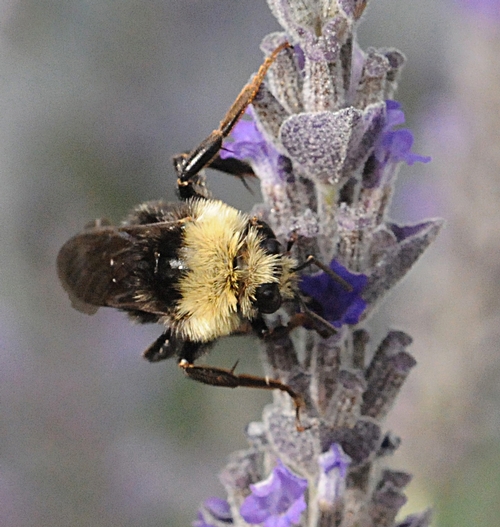Those yellow-faced bumble bees know how to put on a happy face.
The males and females frequent our bee friendly garden to sip the sweet nectar of lavender, catmint and rock purslane. The females collect both nectar and pollen for their brood.
I think we have a nest of them beneath the catmint.
Plant it, and they will come.
The yellow-faced bumble bee (Bombus vosnesenskii), as its name implies, has a yellow face, a mostly black thorax and abdomen, and a yellow band near the tip of its abdomen.
The ones below are males, according to native pollinator specialist and noted bumble bee expert Robbin Thorp, emeritus professor of entomology at the University of California, Davis. Although officially "retired" (not!), he continues to do research on bumble bees and other pollinators.
Thorp also monitors the half-acre Häagen-Dazs Honey Bee Haven at the Harry H. Laidlaw Jr. Honey Bee Research Facility at UC Davis for bee species.
It's a treat to see the bumble bees there.
It's a treat to see them anywhere.
You gotta love those bumble bees.
Attached Images:

Bumble Bee and Honey Bee

Sip of Nectar

From the Back

Put on a Happy Face